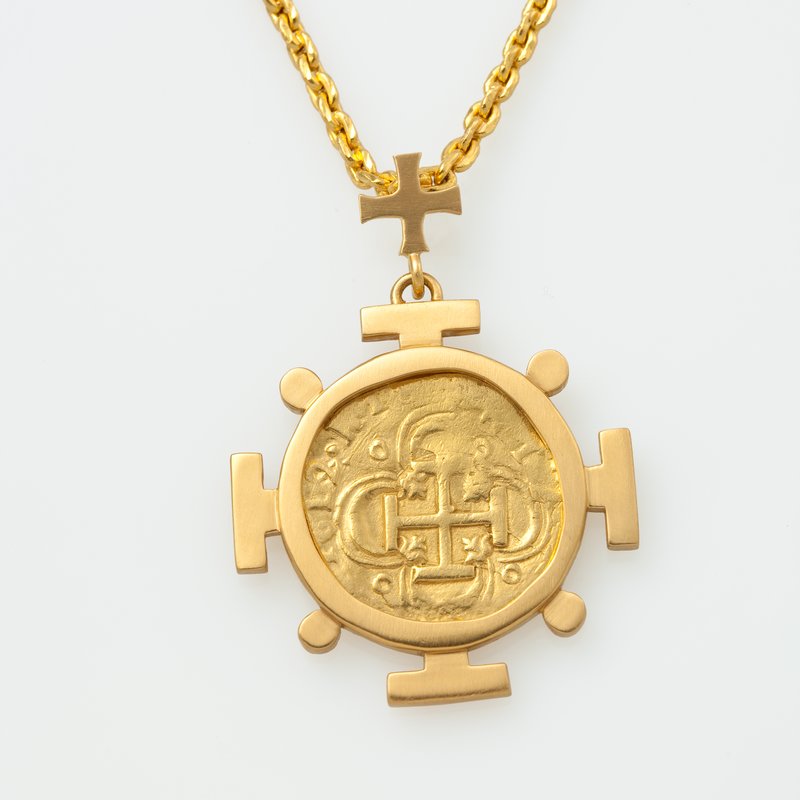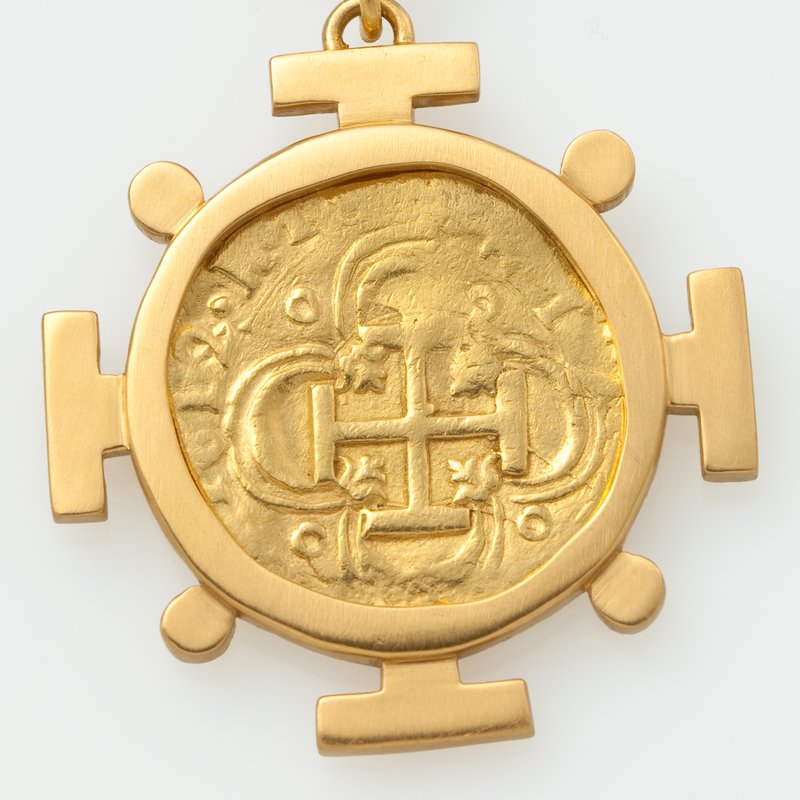

Spanish Gold Coin Pendant
Cob coins were minted between the mid-15th century and mid-17th century. Cob is an acronym for “cut off bar”. The minters would cut off a piece of bullion, trim it to weight and then put this blank into the dies which were utilized in a scissors-like fashion. This was a much quicker method of minting than stationary dies. Further trimming was sometimes necessary to achieve the proper weight of the coin. Most silver cobs were not struck primarily for circulation but as a means for sending bullion in fixed quantities, easily divisible and accountable to Spain’s treasuries from the New World. Gold cobs were mainly produced in Spain, until late in the 17th Century when a few of the colonial mints were allowed to mint gold coins.
Dos escudos Spanish Colonial coin reign of Philip III (1612), Seville Mint, Assayer B. Obverse: Shield of the Hapsburgs; Reverse: Cross Potent with equal-sized arms dividing the coin into quadrants surrounded by a quadripartite treasure. All quadrants depict a small flower possibly a fleur de lys. Surrounding the cross, is a partial legend with the letters H I S for Hispaniorum. Assayer B. Coin is mounted in 22kt yellow gold.
Chain sold separately.
